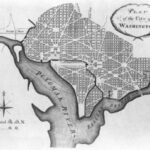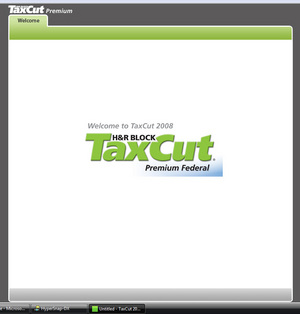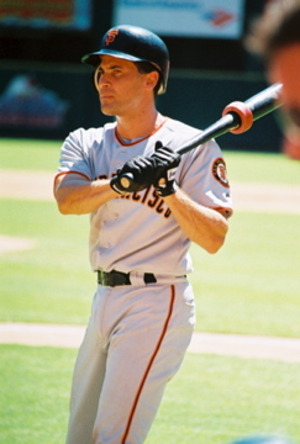Bremerton, Washington is a rollercoaster of a city. At the peak of World War II, the naval city housed approximately 80,000 people. By 1950, however, only 27,678 people still lived there. While the city maintained itself fairly well from 1950 to 1970, downtown Bremerton began to deteriorate in the late ’70s, prompting the Bremerton City Council in 1978 to pass an ordinance that declared it a “blighted area.” In the ’80s, businesses flocked to nearby Silverdale which boasted lower taxes and room for growth.
Recently, Bremerton has begun the process of revitalizing its downtown sector. The waterfront has seen the birth of a new hotel, convention center, condominiums, and restaurants. The city has recently started an ad campaign featuring the song “Move to Bremerton” by legendary Bremerton-born punk-rock band MxPx.
Throughout all of the ups and downs of its history, Bremerton has had a companion in the form of its daily newspaper, the Bremerton Sun or, as it is now called, the Kitsap Sun.
The Bremerton Sun was first published in 1935 and was named the Sun to compete with Seattle’s “Seattle Star.” It was obtained by the John P. Scripps Newspaper Group in 1940. In 1986, that group merged with the E.W. Scripps Company, which currently owns the paper.
According to a blog post on the web site http://www.visualeditors.com, the paper dropped the word “Bremerton” from its name in 1986. It became the Kitsap Sun in 2004 [1]. The paper covers all of Kitsap County (which includes Port Orchard, Poulsbo, Silverdale, and Bainbridge Island) as well as neighboring Jefferson and Mason counties. According to wikipedia.com, it reaches 100,000 adult readers each week (though the article does not cite a source for that figure). The blog at visualeditors.com suggests that the paper’s daily circulation (in 2004) was 30,370.
While the Kitsap Sun is probably the most prominent paper in the area, it does have competition. There are a variety of small daily papers littered throughout Kitsap County, including the Bremerton Patriot, the Port Orchard Independent, the Bainbridge Island Review, the Central Kitsap Reporter, the North Kitsap Herald, Northwest Navigator (which covers the Bremerton Naval Base), and the Kitsap Peninsula Business Journal.
Additionally, since the Kitsap Sun covers Jefferson and Mason counties in addition to Kitsap, newspapers covering those counties can also be viewed as competition to the Sun. These papers include the Jefferson County Leader and the Peninsula Daily News in Jefferson County and the Shelton-Mason County Journal in Mason County.
The following analyses of The Kitsap Sun are based off of three papers dated January 19 (Friday), 21 (Sunday), and 22 (Monday), 2007.
The Kitsap Sun seems to have fairly typical dimensions when compared to similar daily papers. It measures 12.2 inches wide and 22.9 inches long. Compared to the Spokesman-Review, which measures 12.5 inches wide and 22.9 inches long, there isn’t much of a difference. Of course, compared to The New York Times, which measures 13.5 inches wide and 21.9 inches long, the Sun seems much smaller (at least in width). But papers with dimensions like the New York Times’ are becoming far and few between, as evidenced by the Wall Street Journal’s recent redesign which made it look less like the Times and more like the Sun, measuring in at 12 inches wide and 22.75 inches long. The Kitsap Sun’s dimensions, therefore, certainly seem in line with the industry standard.
The Kitsap Sun’s columns measure 1.8 inches wide, which is slightly narrower than the New York Times, whose columns measure 2 inches wide. Of course, this stands to reason; the New York Times has wider pages, hence, it would make sense that they’d have wider columns; conversely, the Kitsap Sun has narrower pages and thus has narrower columns.
The quality of the photographs appears adequate if not spectacular. Most of the photographs compliment the story they accompany fairly effectively, but a few look as though they should not have been included at all.
For example, a story about meth labs on the front page of Monday’s paper appears with a photograph of a Washington State Patrol SWAT unit preparing to search a house. Looking at the photograph without reading the caption, however, one merely sees a blurry image of two random guys in some indistinguishable police gear standing in a poorly lit room. It is not a very interesting or perceptive photograph, especially for a front page story.
The actual print quality of some of the color photographs also occasionally appears substandard. A photograph of Nancy Pelosi, for example, appears blurred for some reason, which results in the photo almost looking cartoonish. It is certainly not the kind of sharp, clear photo that the Sun should strive for.
Despite these minor imperfections, most of the photographs are decent if not good, and do a fair job of providing a visual synopsis of the story and catching reader’s eyes. For example, Friday’s front page story about the possible closure of a Central Kitsap school is accompanied by a photograph of a row of people sitting at a public hearing regarding the school’s possible closure. All four of the people visible in the photograph are sitting with their backs straight against their chairs except for one young elementary student leaning forward with his hands intertwined and resting gently against his cheek as his eyes stare intently at the front of the room. The photograph captures the boy’s interest and thereby helps make readers interested in the story.
The Kitsap Sun is clearly a community-oriented paper. Out of the three papers analyzed, Monday and Friday’s front page each had four stories written by staff writers, and only one wire story each, while Sunday’s front page had three stories by staff writers and one wire story. All of the staff-written stories had a connection to Kitsap County except a story about a marijuana bust in Everett, Washington.
The front page wire stories tend to be either feature-style stories or analyses. In the case of all three of these papers, the wire stories were designated “Editor’s Choice,” which implies an interesting, though not necessarily important, story. Friday’s “Choice” article was from the Los Angeles Times and chronicled the adventures of a man that nearly died in a sea storm. Sunday’s was a more analytical story from the Los Angeles Times speculating as to whether any “bona-fide” conservatives were prominent White House contenders. Monday’s “Choice” from the Associated Press discussed how the Miss America Pageant was trying to make itself relevant in contemporary America.
The “Editor’s Choice” stories seem to be designed to grab eyeballs and pull them into the paper. By headlining such stories “Editor’s Choice,” the paper essentially marks them as stories of interest to the reader. Somebody that has been captivated by an “Editor’s Choice” story in the past finds themselves picking up the paper and immediately searching for the latest “Choice” story to see if it will satisfy their appetite.
It therefore seems that the Kitsap Sun’s front page is designed, appropriately, to command attention. In addition to the “Editor’s Choice” stories, the abundance of local stories obviously tend to catch the eyes of local residents since such stories are often perceived as affecting their day to day lives more prominently than national or world stories. Locals also aren’t likely to get much of that local information anywhere else, considering that other major regional news outlets, such as the local TV news and radio stations and papers like the Seattle Times and Seattle Post-Intelligencer, rarely cover events in the Kitsap area unless they happen to be particularly significant or interesting. Therefore, Kitsap residents are not likely to have already heard a local story on another medium (with a possible exception being through word-of-mouth).
Throughout the paper, the Kitsap Sun relies on a variety of different wire services for most (if not all) of their national and international news. In these three particular papers, stories appeared from the Los Angeles Times, the Associated Press, the Baltimore Sun, the Washington Post, and the Minnesota-St. Paul Tribune. By far, most of the stories seem to be from the Associated Press, followed closely by the Los Angeles Times.
Despite its focus on local stories, each paper contains a “Nation and World” section. Naturally, this section is made up almost entirely of wire stories. Monday’s “Nation and World” section was three pages, Friday’s was two, and Sunday’s was four. This is not enough space to go into as much depth on these stories as national papers like The New York Times, Wall Street Journal, or USA Today are able to, or to cover some of the less sensational but still important national and global stories, but it is enough to cover the national and international highlights, thereby keeping readers of the Sun at least decently informed.
Each issue of the Sun also contains an opinion section. This section usually contains an editorial by the paper’s editorial board, an editorial cartoon, letters to the editor, a community column, two nationally syndicated columns, and the cartoons Doonsebury by Garry Trudeau and Prickly City by Scott Stantis (providing humorous musings on life and politics from liberal and conservative perspectives, respectively). Sometimes, as in Monday’s paper, the community column and editorial board editorial are omitted. In Sunday and Friday’s papers, the opinion section was two pages, whereas Monday’s was limited to one page.
The opinion section also contains a masthead listing the paper’s editorial policy, as well as a list of the editorial board’s makeup, which includes the Publisher/President, various editors, the marketing director, and five members of the community. It seems that including members of the community on the editorial board is a good way to ensure that the Kitsap Sun provides a voice for the people in the community. It may or may not be a novel approach, but it is certainly a good idea.
The business page or section of the Kitsap Sun varies drastically from issue to issue. Sunday’s business section actually constituted an entire section, totaling four pages. It contained one local story about a fried chicken franchise opening in Bremerton, a somewhat regional story about a nonprofit organization in Kennewick, Washington employing developmentally disabled people, a Kitsap business brief, several columns, and a wire story about Martha Stewart. It also contained stock prices and other stock information.
Friday’s business section, by contrast, came in at a much more skeletal one page. It contained two wire stories and stock market information.
The business page was omitted altogether in Monday’s paper.
The copyreading is adequate, which is to say that there is no abundance of glaring spelling or grammatical errors that make the stories difficult to read, nor are there egregious factual errors which detract from the paper’s credibility. However, reading over the paper carefully, several small mistakes can be found, including: “The police department has 17 cimmissioned officers . . .”; “‘If your occupation is dealing drugs, keeping looking over your shoulder. . .”; “The show pays none of your expenses, plane fare included, she said, ‘so its kind of like paying for your trip.'”; “A 48-year-old Belfair man was heading west on Highway 160 near Geiger Road in South Kitsap crossed the center line . . .”
The Kitsap Sun has a Web site, http://www.kitsapsun.com. The Web address is displayed prominently on the front page, right above the nameplate.
There are references to the Web site littered throughout the paper. For example, Monday’s editorial page, near the top of the page, reads:
“SHARE YOUR THOUGHTS
–> Respond to editorials, letters to the editor and columnists.
KITSAPSUN.COM”
The Web address is also displayed at the top of each page opposite the date and page number.
Also, each story penned by a staff writer includes the writer’s email address under the byline, making it easy for readers to get a hold of them, should they have additional information on a story, find factual errors, or otherwise need to get a hold of a specific staff writer.
Reading stories on www.kitsapsun.com is free to everyone, whether they subscribe to the newspaper or not; however, visitors to the site must register (which includes providing a name and e-mail address among other information) to view most of the paper’s online content.
Probably the first thing to catch a Web surfer’s eye when they log onto kitsapsun.com is a banner near the top of the page that rotates through reefer photographs/headlines (which link to a story when clicked) about every seven seconds. On February 28, 2007 it was rotating through six stories.
The paper’s online presence definitely provides the services of an ongoing publication. At 3:58 on February 28, 2007, the first three stories (all local) displayed on the Sun’s Web site were posted at 11:00 a.m., 1:10 p.m., and 3:20 p.m., under a banner that read: “NewsWatch **Updated All Day** Click Here for More Breaking News.” Clicking on it links to a page that allows one to sort through breaking news in categories like “nation/world,” “Washington state,” or “sports,” among others.
The home page also linked to a page listing school closures due to inclement weather.
The next four stories were also local stories (and probably appeared in that day’s print edition). These were listed under a banner reading “Today’s Top Stories ** Click Here for More Local/State News.”
Following that is a banner reading “Latest National & World News” which is broken into two columns; one displaying headlines for the stories (as opposed to headlines and descriptions, which the stories in the previous two categories contained) and a second column scrolling through news videos for national and global stories.
The next banner is titled “Features,” followed by “Paid Advertising,” “Sports & Recreation” and “Business.”
Adding to the navigability of kitsapsun.com, there is a menu at the top of the page, just under the nameplate, dividing the site into the following categories: home, local, communities, world, blogs, sports, life, opinion, business, entertainment, and classifieds.
Mostly, these categories mimic the sections of the physical paper; however, the online menu actually allows for even narrower categorization, making it easier for the reader to find the kind of stories they’re seeking.
For example, in the physical paper, stories covering North Mason County would be thrown into the first section of the paper. On kitsapsun.com, however, one merely need hover the mouse over “communities” and then, once a list of local communities appears-ranging from Bremerton, to Bainbridge Island, to Kitsap Military-click on “North Mason.” Voila! A list of stories from the North Mason area, in order of chronology with the most recent stories at the top, suddenly appears.
The Sun’s Web site also allows the paper to post video and audio content that couldn’t be included in the physical paper.
Another component of kitsapsun.com that distinguishes itself from its physical counterpart is the presence of blogs. Kitsapsun.com hosts 10 official blogs and two “associated blogs,” which are written by Kitsap Life columnists and appear on third party Web sites.
One of the interesting things about kitsapsun.com’s blogs is that it allows for a more immediate and engaging interactivity with readers than the letters to the editor section in the physical paper, because it allows readers to leave comments on any blog post, which can result in engaging forum-style discussions.
For example, a post on Steven Gardner’s blog “The Bremerton Beat,” about a mosaic at Bremerton’s Olympic College that might be torn down, included several comments from community members brainstorming ways that the mosaic could possibly be saved: “Olympic College art students could help dismantle the mosaic while OC contacts the engineering department at the University of Washington and get their input,” one user said. Said another, “Well hopefully a professional photographer (Like the one at the SUN)could document it so a high-resolution print of it could be made later on so at least the design of the mural could outlive the physical installation itself.”
These comments seem to demonstrate the way that blogs empower citizens to easily give their input. Whether any of those ideas will actually be implemented or not remains to be seen, but citizens certainly have a greater likelihood of getting their ideas put into action when they have an outlet to express them in than if their ideas are merely fermenting within their brain.
Overall, the Kitsap Sun effectively delivers local stories. It is also proactive in providing forums for local residents to voice their opinions on local issues. As far as national and international news, the coverage is a bit sparse but then, the paper clearly sees itself as a local paper, so its focus on local stories is understandable. While it might not be appropriate to call the Kitsap Sun an excellent newspaper, one certainly can’t call it a bad one.
[1] http://www.visualeditors.com/forum/archive/bremerton-sun-to-redesign-may-22-2945.htm#SlideFrame_1




